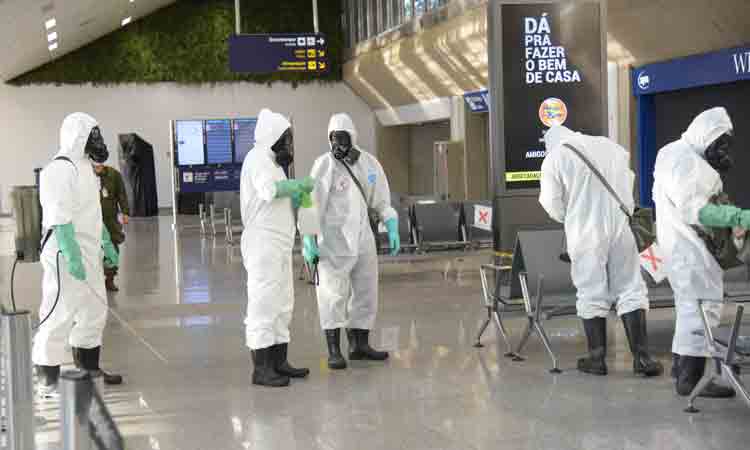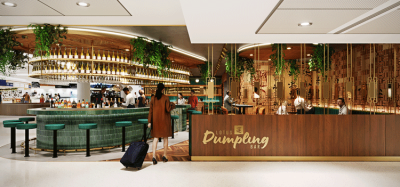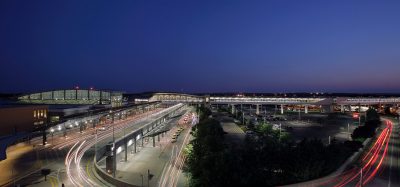Aviation must keep fighting to keep flying post COVID-19
Posted: 25 August 2020 | Inderjit Singh | No comments yet
An optimistic mindset, a positive outlook, a never-say-die attitude and perseverance will take us through this crisis, as this resilient industry did post 9/11, says Inderjit Singh, ICAO Airport Consultant and former CEO of Indira Gandhi International Airport.


‘The Show Must Go On’ is a song by the British rock band Queen, featured as the 12th and final track on their 1991 album, Innuendo. The song chronicles the efforts of Freddie Mercury – the British singer, songwriter, record producer and lead vocalist of the band – who continued to perform despite approaching the end of his life, although his diagnosis had not yet been made public in spite of on-going media speculation claiming that he was seriously ill. The COVID-19 pandemic – with all the unprecedented uncertainty and mystery surrounding it – is reminiscent of the song, with the lyrics: “Empty spaces, abandoned places, I’ll face it with a grin, I’m never giving in, the show must go on.”
The global economy has taken a major hit during this pandemic, with all activities having come to a grinding halt. The aviation industry provides connectivity and supports tourism, trade and commerce in the larger global economic order. Hence, after considerable review – and in consultation with global aviation regulators and health authorities – the governments of the world have decided to end the embargo on air travel to kickstart air traffic activities on a country-wise and case-to-case basis, in a judicious, cautious, calibrated and strategic manner – initially for stranded passengers, based on urgency and an emergency basis, followed by normal air travel under strict guidelines. The strategy is three pronged: To instil confidence among travelling people; initiate action to revive the economy; and, more importantly, to gear-up and upgrade airports with appropriate technology that not only fights the current menace, but increases preparedness for any similar occurrence in the future. The show must go on!
Responding to the challenges of COVID-19
Airports around the world, in the midst of COVID-19, have had to revisit, realign and redefine their passenger and baggage processing systems once again, to ascertain reasons for having relegated the significant passengers’ health concerns to the back-seat while focusing on other concerns, such as physical comfort, luxurious lounges, rich wines and delectable cuisine. Ironically, though physical fitness of pilots and the cabin crew has been considered previously, there has been no specific provision to check the physical fitness of passengers.
To me, as an airport operator, the passenger is a very significant link in the supply chain of the air transport industry. The first parameter we must consider is that the customer, the air passenger, is the ‘raison d’etre’; the sole reason for the existence of all of us who work at airports and within the air transport industry. The passenger is our livelihood, our income, our profit, our future and, as such, is not an interruption to our daily lives. They are not a mere ‘pax’ (a horrible word), as often referred to in the airport and airline parlance. As soon as everybody – both high and low in the world transport industry – recognises this fact, the sooner the priorities and system will improve. A weak link anywhere and the chain will snap.
With the likelihood of a vaccine emerging in the foreseeable future being bleak – despite the best efforts by the world’s epidemiologists, virologists and medical institutions around the world – the challenge facing the industry is to ‘move on’ with its activities, ensuring that all precautions to safeguard passengers’ health concerns are adequately dealt with at airports.
Aviation learns from the past
As airport operators, we have witnessed several virus-related epidemics: SARS (2003), H1N1 (2009), MERS (2012) and EVD (2016), though none as severe and widespread as the current COVID-19 pandemic. Incidentally, the current virus and past viruses are similar in many ways. They all have the same initial symptoms, are respiratory illnesses caused by coronaviruses and are believed to have originated in birds, jumping to humans via an intermediate animal host. The initial preventative and containment measures too are the same, as were advocated in the earlier instances – for example, masks, sanitisation and social distancing. Learning lessons from past occurrences, the world would have been better prepared for such an eventuality. Although nobody could have predicted the extent of the pandemic, global airport hubs need to work ahead of time to develop strategic measures to combat such emergencies, like with firefighting, bomb threats and hijacking.


The airport ecosystem will be quite different post COVID-19
Considering the benefit of hindsight, I would suggest a step further in the aftermath of the COVID-19 pandemic. There should, periodically, be ‘health audits’ introduced at airports – similar to the safety and security audits that are currently mandatory at all airports worldwide – conducted by an external agency that is outside the airport and local government’s authority and open for an independent and impartial review by a global health regulatory authority.
In the aftermath of 9/11, global aviation regulatory bodies – in collaboration with the best minds in the trade and with hands-on experience in airport security and passenger facilitation at airports – introduced procedures, processes, norms and systems for airport security checks to counter acts of unlawful interference to civil aviation. The prevalent provisions were completely overhauled to tighten the security systems across the board and made mandatory for all nations to comply with. Confidence among travellers was regained by deploying visible security gadgets and effective screening measures, procedures, processes and solutions. Though passengers were initially anxious and reluctant to arrive far in advance of the flight times in order to go through the tedious security drill, in due course, they accepted it as a ‘new normal’.
Airports have already initiated, and in some cases completed, actions to upgrade their passenger processing facilities, as per their respective exit plans, in anticipation of recommencement and also enhancement of operations. Airports now have the chance to turn this situation around to its benefit and use it to deploy technologies that will instil passenger confidence, making travel safer, more resilient, streamlined and sustainable. This will make airports more agile and adaptable to any future, similar or even more severe crises.
An ideal post-COVID-19 airport industry
In an ideal future, all departing and arriving passengers will be checked by thermal cameras and a body temperature check will be conducted with contact-free thermometers. If necessary, rapid health testing will be applied in isolated areas. For high-risk cases, airports shall provide quarantine rooms equipped with state-of-the-art medical equipment. Hygiene kit vending machines will be set up within the terminals, with hand sanitiser stations placed at relevant locations for passengers to use. Only passengers with a flight boarding card and personnel on duty will be granted access to the airport. All areas from the kerbside to boarding gate shall be duly marked for social distancing. Social distancing norms shall not create any congestion in initial stages, as relatively smaller aircraft with lesser frequency will be used for want of adequate traffic.
Passengers shall be required to wear a face mask at all times, and instructed to walk over a special sanitiser mat at all passenger terminal access points. Checked-in baggage shall be taken through disinfection tunnels. The trays at the security checkpoints shall regularly be disinfected, while plans are in place to introduce additional special sanitising systems for tray cleaning.
Last word
COVID-19, unlike other viruses that the industry has witnessed, has left a deep-down ‘fear to fly’ among travellers. Significant steps by way of clear intent, a roadmap, an implementation strategy and a welldefined marketing campaign at airports and in the media are a prerequisite to instil confidence among travellers to take to the skies again. For air travellers, there are no stops, only stopovers!
Biography
Inderjit Singh has served as an airport consultant in several countries of Asia, South-East Asia, Middle‑East, Africa and South America in the planning, design, development and management of airport facilities in varying socio‑economic environments with leading airport authorities, global organizations and under the aegis of ICAO. As former CEO and chairman of the airport security committee of IGI Airport, New Delhi, he has hands-on-experience of all functional aspects in administration and operations of a major international airport.
Issue
Related topics
Airport crisis management, Airport development, COVID-19, Economy, Regulation and Legislation

















